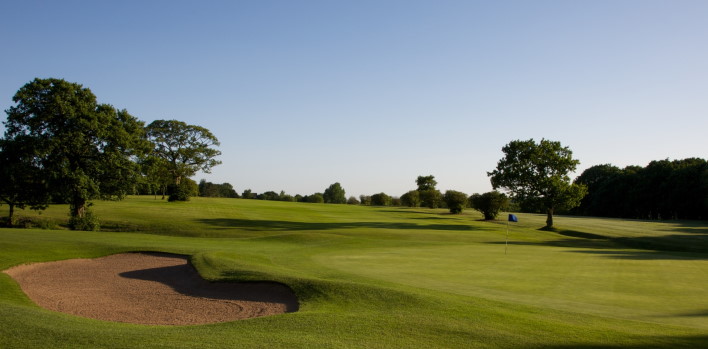Cavendish

Here you will find some of wickedest and most interesting putting surfaces in the UK and a handful of wonderful green complexes.
Yes, there are a few ‘filler’ holes along the way and Cavendish is far from the complete package but if you enjoy the challenge of relatively short approaches to well-guarded, undulating greens – and where missing on the wrong side can be fatal – you will love this course.
And in truth there is some big golf required along the way too, especially when the course plays soft, which it invariable does with its valley location in the heart of the Peak District. Holes five, six, ten, 11, 16 and 18 all weigh in over the 400 yard mark and with five par-three’s, versus just one par five, the par of 68 does mean that it’s not all drive and pitch golf.
The man to thank for the course is mostly Dr Alister MacKenzie, one of his later projects in the UK, The Club having been founded in 1925. The Club perhaps say it best on their website; “Cavendish is thought by some to be Dr MacKenzie’s most accomplished work in the UK and quite possibly the best layout in the world under 6000 yards. It illustrates how skilfully and creatively he blended the layout of the golf course into the surrounding landscape.”
Not all of MacKenzie’s work is still intact with much of it having been tinkered with over time but the basics are undeniably still there. The routing of the course remains pretty much the same and this is a real credit to him because whilst this is a very hilly site the walk is actually relatively easy-going.
At Cavendish there are some really cool features throughout the round, most notably on and around the greens, with more than half-a-dozen outstanding golf holes. These come at the fifth, 10th, 11th, 13th, 14th, 15th and 18th.
The first three of these are excellent two-shotters. A wide fairway greets the golfer at the uphill fifth but it is an approach from the more dangerous right-hand-side that is favourable to the raised green. The tenth makes the most wonderful use of a ridge where bigger hitters have a real advantage, if they can fire one down the left, and is a hole I suspect most club golfers will play as a par-five because of a ravine 50 yards short of the green. The same ridge continues down the next and is used superbly to break up the fairway into a higher and lower section with an inviting and angled green waiting at the bottom.
The next three of the ‘super seven’ comprise two one-shotters and a fabulous par five. The uphill 13th features a boomerang shaped green where a running hook-approach is favoured and missing on the left is deadly. The 14th makes excellent use of a wall up its entire left-side that must be flirted with for the best chance of reaching this sub-500 yard par five in two; that opportunity is hindered further by a stunning raised green complex that will shun away anything except the truest approach. The 15th completes a run of three cracking holes and is a 116-yarder played across a valley to a wide but thin green that slopes significantly from left-to-right and is guarded by two bunkers plus a steep drop-a-away at the front.
Meanwhile the 18th is one of the best finishing holes you will find. Demanding at 441 yards the predicament you could find yourselves in here is ending up in a gully that runs across the fairway at around 230-240 yards. Find this depression and you won’t be able to launch the ball high enough to clear the ridge and get enough distance to find the green. A carry of 250 yards is required to hurdle it otherwise laying up and leaving a long approach may be the best option but the plateau green is not one that favours a running approach!
In addition to the seven holes above there are a number of other good holes that have some real moments of interest. The second shot to the second green is certainly one of these as is the falling approach to the 17th. Virtually every putting surface holds bags of interest and this makes holes that would otherwise be mundane a lot more challenging and keeps the round flowing nicely.
On my visit in mid-September the course was soft, but certainly not wet, and although the greens were a bit slow and bobbly (hollow-tined a couple of weeks beforehand) you could really get to experience the magnificent borrows and challenges of the putting surfaces.
Cavendish may not be everybody’s cup of tea but it’s rare to find so many strong elements on a course like this and is 100% worth playing. It rightly makes it as one of our top golf courses under 6,000 yards.



